Nowadays, there are many different ways you can participate in eCommerce and take advantage of creating an online store. The first thing that comes to mind is opening your webshop, either with products you make yourself or as a distributor for other brands. Both of these have some obvious drawbacks – the former requires you to monitor your stock carefully and constantly be on top of your production capabilities. In contrast, the latter requires coordination with outside sources, contract renewals, price changes, etc.
While not obvious at first glance, sooner or later, you’ll realize you can be a facilitator, i.e., create a platform others will use to sell their products. Congratulations, you’re now thinking along the lines of an online multivendor marketplace.
You’re probably thinking that creating a whole marketplace with dozens or even hundreds of vendors is some massive undertaking that requires, at the very least, a whole team of people dedicated to the cause. We’re here to tell you that it isn’t so much beyond reach and that everything you’d need can be found within one single plugin – MarketKing.
What Is MarketKing
As we’ve mentioned, MarketKing is a WordPress plugin designed to change your regular WooCommerce webshop into a WooCommerce multivendor marketplace. Creating a platform such as this will enable you to bring in various vendors, hence WooCommerce multi vendor, into the fold and sell their products either to individuals or even to other vendors with wholesale prices – we’ll get into more details for both options down the line.
The benefit of using WordPress and WooCommerce in tandem to create a specific WooCommerce marketplace is the familiar surroundings potential vendors will appreciate. You must consider that not all vendors come from a tech background, so backend operation could prove troublesome.
If you’re running your webshop or are working with only one vendor, it isn’t such an issue, but since you’ll be offering up your services to a wide range of users, a universal solution is required. WordPress and WooCommerce are so widespread, especially among novices. Having a familiar user interface means you can maximize your potential user pool.
In addition to vendors selling their products to the general user base on your marketplace, they’ll also be able to sell products wholesale to other businesses. As you would expect, the differences between the two are palpable – on the one hand, you have the cart as your be-all-end-all conversion tool; on the other, there are quotations, proformas, variable prices, and discounts based on quantity, etc. We’ll get more into all the wholesale, and B2B features shortly.
What You Can Do With MarketKing
Before reaching out to vendors to share your WooCommerce marketplace, it’s important to know what you’ll need to do and what you can do on your end. As the admin, you’ll have access to a special dashboard that gives you an overview of everything on the site, like sales reports, vendor registration requests, messages, etc.
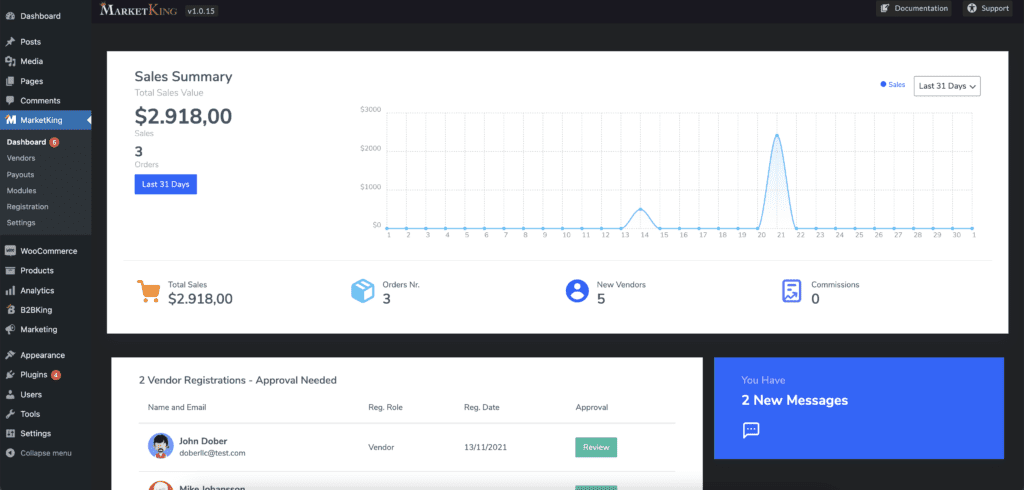
Going through the various sections, you’ll be able to access a detailed list of all your registered vendors (checking and editing their settings, permissions, etc.), giving you an easy way to stay on top of everyone that does business on the marketplace. This list is specifically available only to the admin and anyone the admin chooses to grant access. The vendors themselves won’t be able to access it.
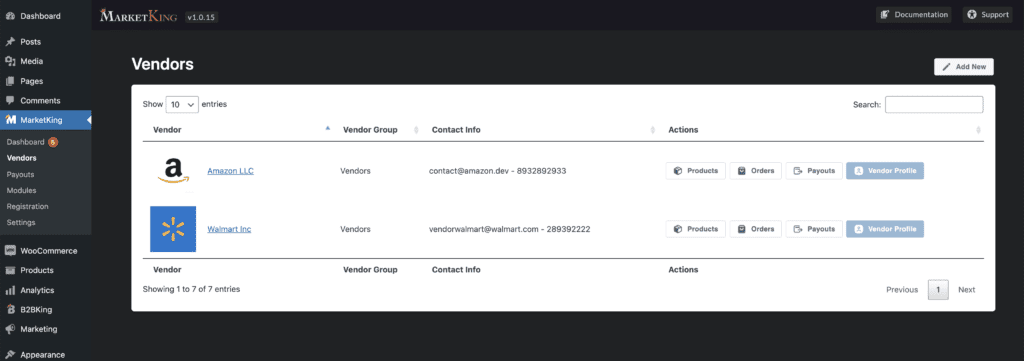
Finally, another admin-level feature is the general settings section. You can do anything from changing the appearance and language to regulating commissions and refund requests and everything in between.
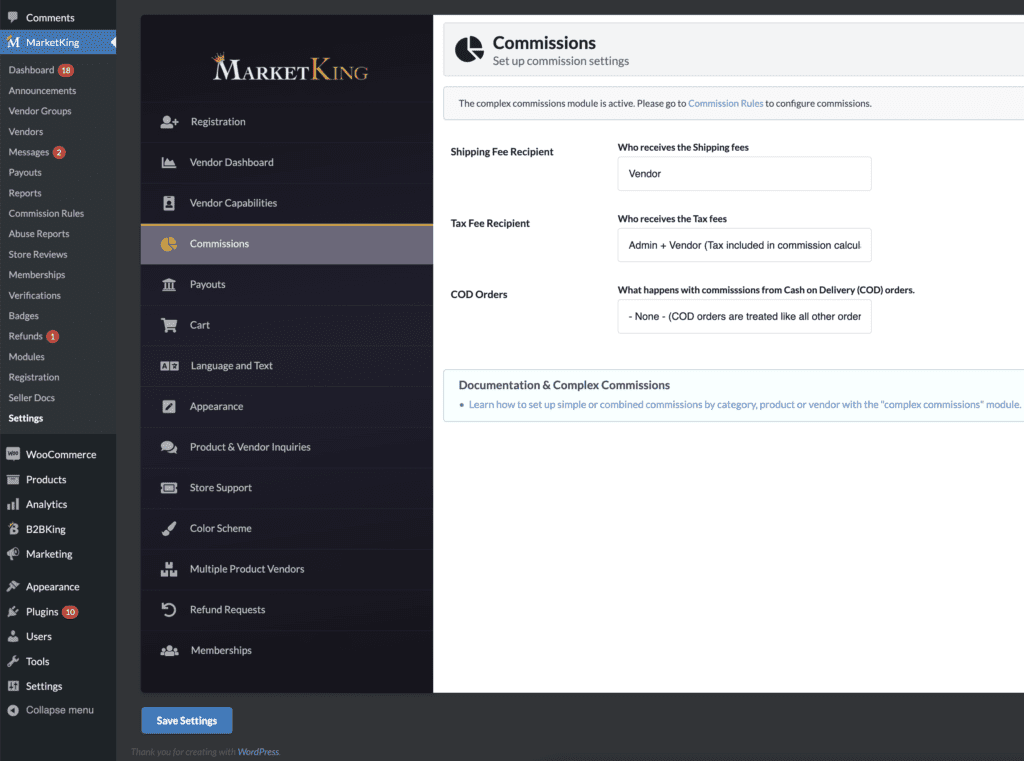
The most important thing you can customize, however, is what your vendors will be able to do themselves. Through the Vendor Capabilities tab, you can, for example, allow them to add and publish their product directly to the marketplace, make changes to the order status, etc.
Each of these permissions can be set globally, throughout the site for all vendors, or individually on a case-by-case basis. You could potentially give more leeway to more established and tenured vendors, for example, ensuring they’ll remain in your marketplace.
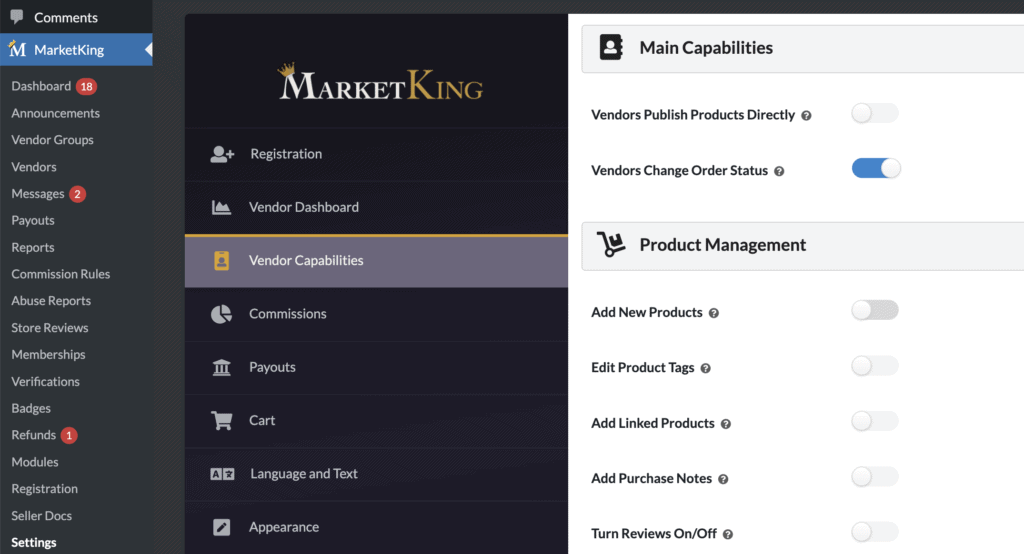
What Your Vendors Can Do With MarketKing
While you’ll have access to every part of the marketplace within your dashboard, your vendors will each have their dashboard where they can run their businesses. Upon logging in, they can manage their products, orders, earnings, etc.
The vendor dashboard is uniform in design from the backend regardless of the visual changes that can be made on the frontend, which again emphasizes the user-friendly nature of the plugin. Also, this separation ensures you can use any available theme for your WordPress frontend, and the backend won’t be affected.
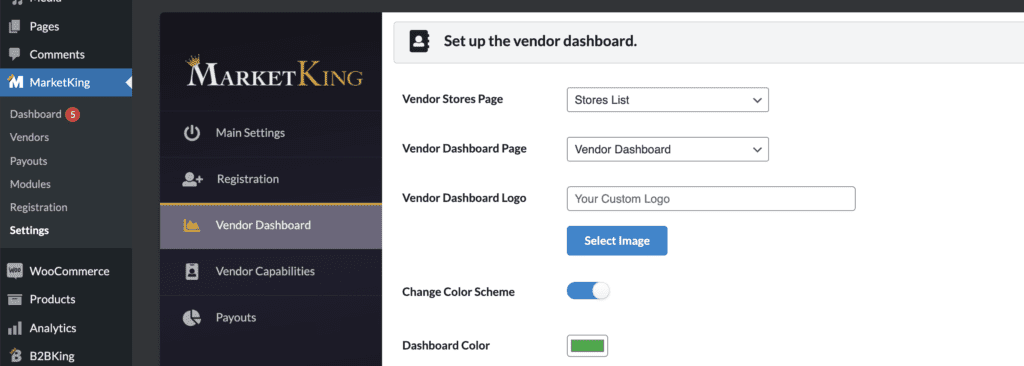
If you’re looking to brand your UI fully, it’s easily done through the settings because the plugin supports white-labeling (removing the plugins brands and color scheme and replacing them with your own). Aside from the backend, where it’s not that critical to have your logo plastered everywhere, it’s much more important to mention the frontend.
Each vendor will be able to set up their frontend display by choosing one of the three premade themes controlling their storefront panels, notices, banners, etc. This ensures they’re uniquely represented as part of a greater whole, your marketplace.
Sections such as the payouts, products, and orders provide all your vendors with sufficient data to make fully informed decisions about their future strategies. Through the payouts page, they can, as the name suggests, monitor all details about received payments, such as the amount, payment method data, and any special notes.
Knowing how your customers are paying is important because you can create special promotions for types of payment – for example, you want to boost payments that come through PayPal, give a 10% discount for the whole cart if you’re paying with PayPal, and watch the numbers grow.
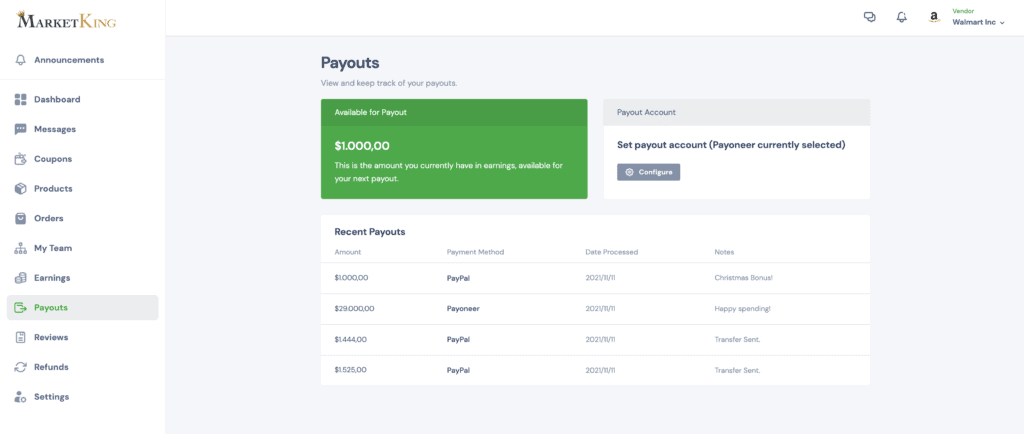
Product pages and order management pages keep to the regular layout you would get with the base WooCommerce UI, meaning everyone familiar with it will be able to jump in instantly. All sections’ inventory status, shipping options, and general attributes remain the same.
Orders are viewed from a single list containing all the essentials but can be expanded upon if needed to access all relevant order information. The order details are in-depth and provide pertinent anything you might need (like billing and shipping info, order value, earnings, etc.) for your data crunch.
Wholesale and B2B
As we’ve previously mentioned, there will be vendors looking to sell to other businesses. Usually, these transactions involve much larger quantities and more challenging logistics that accompany them. With MarketKing, you’ll be able to integrate your plugin with another, more specialized plugin – the B2BKing for Wholesale & B2B.
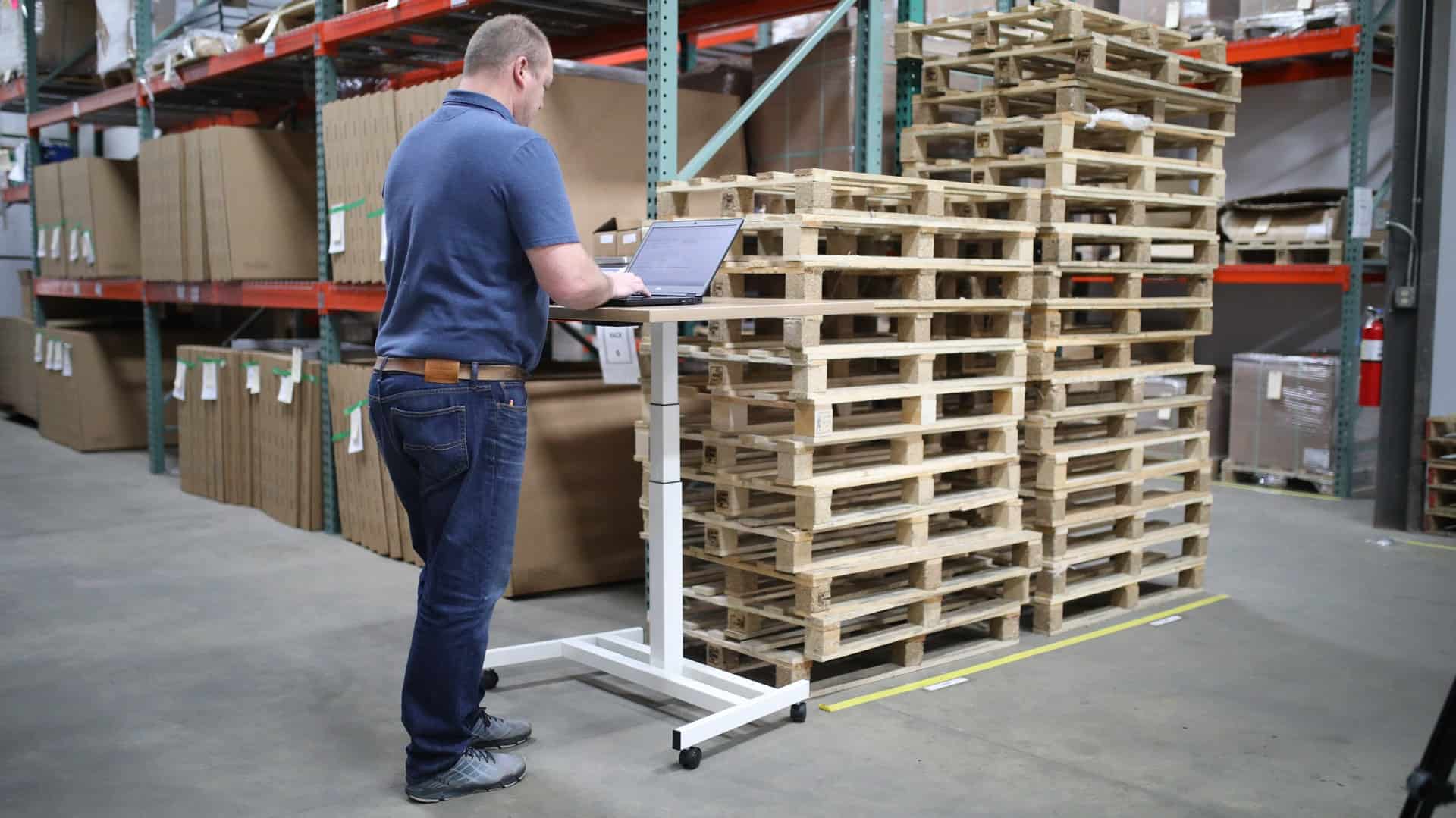
Because it comes from the same dev team, B2BKing is natively integrated with MarketKing, so all features seamlessly fit and expand upon the ones MarketKing initially offers. Through the integration, your vendors unlock settings for wholesale prices (that are by default different from retail prices), bulk orders (if customers order more, they get better prices and shipping arrangements), product visibility (special product packages could potentially be visible only to wholesale buyers), the ability to receive quote requests (other vendors usually don’t use the fronted UI of a webshop and instead require a direct quote) and much, much more.
Vendor Subscription Plans
The great thing about the MarketKing plugin is that it’s designed to generate profit for you, and not in a roundabout way either. Some plugins give you the tools to enhance your site and your profit potential through increased conversions, better SEO, backend optimization, etc.
In other words, you can sell whatever you want, and “plugin x” will make your methods more efficient. MarketKing, on the other hand, literally enables you to sell subscriptions to vendors that want to use your marketplace, i.e., you’re getting a service to sell that wouldn’t be possible without the plugin.
Keep in mind that this isn’t “free money” in any way, shape, or form because you need to, firstly, reach an acceptable level of reputation for vendors even to want to become your users, and secondly, maintain and grow to keep those and attract new ones.

As with any subscription service, there are tiers to this. You’ll be able to offer budget plans for those just starting and working with a limited inventory or provide VIP plans for those that work only with large numbers (both in the number of products and their quantity) and everything in between.
Going upward in tier cost, you’re gaining the ability to sell more products dispersed through more categories, all managed with the already mentioned admin dashboard where you can handle any permissions for your vendors. Since you’re running a WooCommerce multivendor operation, not all your user will be given the same treatment regarding their permissions and features. For your convenience, you’ll be able to sort them into groups (only visible to you, of course) to make it easier to handle.
Summary
There are other ways to create your multivendor marketplace, but it’s hard to argue with what MarketKing brings if you’re looking to maximize your potential. You have a WordPress plugin that provides seamless WooCommerce integration and enables your subscribers to work both in retail and wholesale.
It will be difficult to find something that checks all those boxes. In short, if you’re looking to create a marketplace like this, MarketKing should top your list of plugins to use.
Where Should We Send
Your WordPress Deals & Discounts?
Subscribe to Our Newsletter and Get Your First Deal Delivered Instant to Your Email Inbox.

